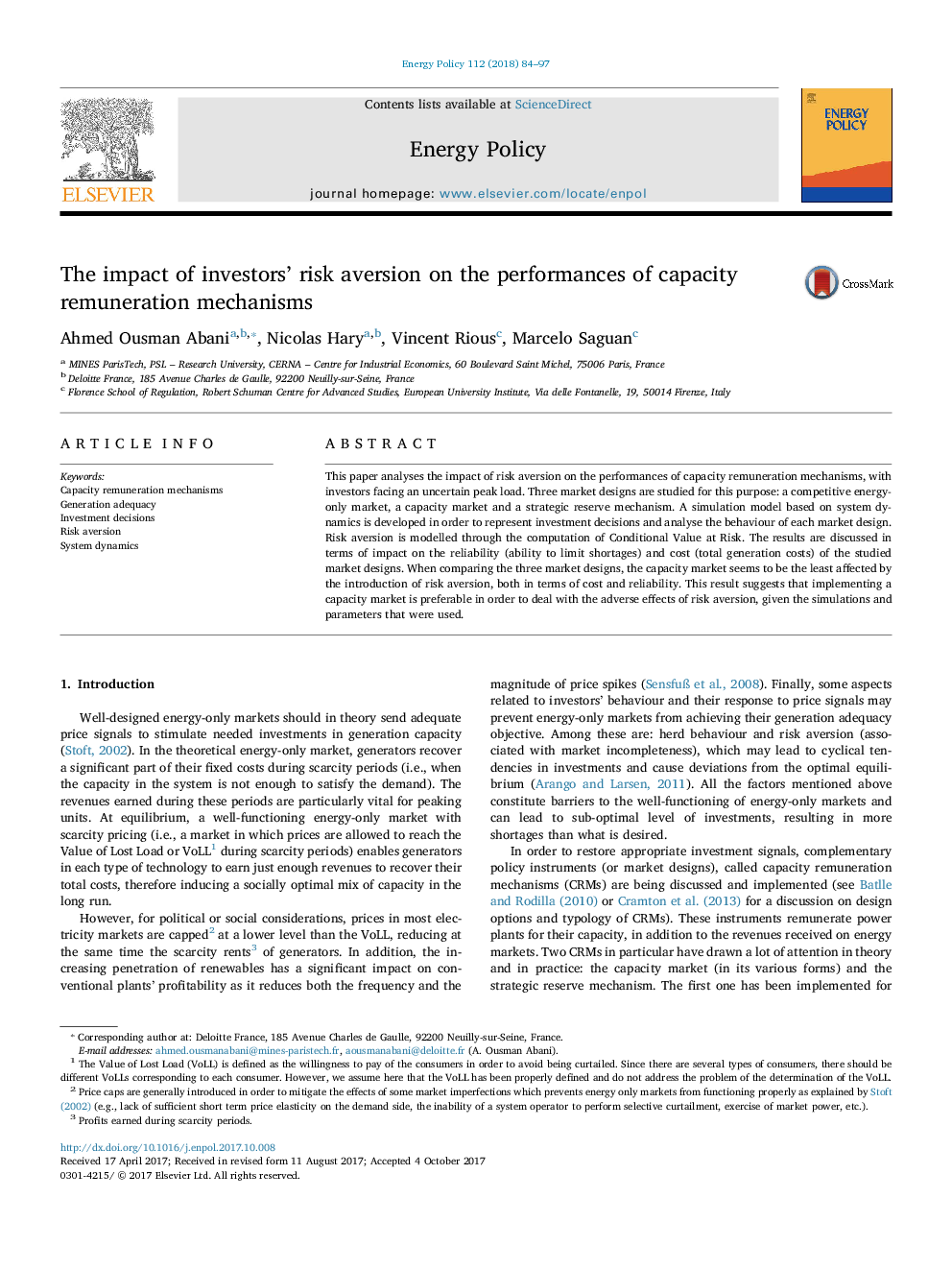ترجمه فارسی عنوان مقاله
تاثیر سرمایه گذاران بر ریسک عملکرد مکانیسم های بازپرداخت ظرفیت ریسک می کند
عنوان انگلیسی
The impact of investors risk aversion on the performances of capacity remuneration mechanisms
| کد مقاله | سال انتشار | تعداد صفحات مقاله انگلیسی |
|---|---|---|
| 96571 | 2018 | 14 صفحه PDF |
منبع

Publisher : Elsevier - Science Direct (الزویر - ساینس دایرکت)
Journal : Energy Policy, Volume 112, January 2018, Pages 84-97
ترجمه کلمات کلیدی
سازوکار پاداش ظرفیت، کفایت نسل، تصمیمات سرمایه گذاری، خطر گریزی، دینامیک سیستم،
کلمات کلیدی انگلیسی
Capacity remuneration mechanisms; Generation adequacy; Investment decisions; Risk aversion; System dynamics;
ترجمه چکیده
این مقاله تاثیر تأثیر ریسک بر عملکرد مکانیسم های بازپرداخت ظرفیت را بررسی می کند، با این که سرمایه گذاران با بار حداکثر نامطلوب مواجه هستند. برای این منظور سه طرح بازار مورد بررسی قرار می گیرند: بازار رقابتی تنها انرژی، بازار ظرفیت و یک مکانیزم رزرو استراتژیک. یک مدل شبیه سازی بر اساس پویایی سیستم به منظور ارائه تصمیمات سرمایه گذاری و تجزیه و تحلیل رفتار هر طراحی بازار توسعه داده شده است. نفی ریسک از طریق محاسبه ارزش شرطی در خطر مدل سازی می شود. نتایج به دست آمده از لحاظ تاثیر بر قابلیت اطمینان (توانایی محدود کردن کمبود) و هزینه (کل هزینه های تولید) طرح های بازار مورد مطالعه قرار می گیرد. در مقایسه با سه طرح بازار، به نظر می رسد بازار ظرفیت، حداقل از رویارزش با ریسک، از نظر هزینه و قابلیت اطمینان، تحت تأثیر قرار می گیرد. این نتیجه نشان می دهد که اجرای یک بازار ظرفیت به منظور مقابله با عوارض ناخواسته ریسک، با توجه به شبیه سازی ها و پارامترهای مورد استفاده، ترجیح داده می شود.

